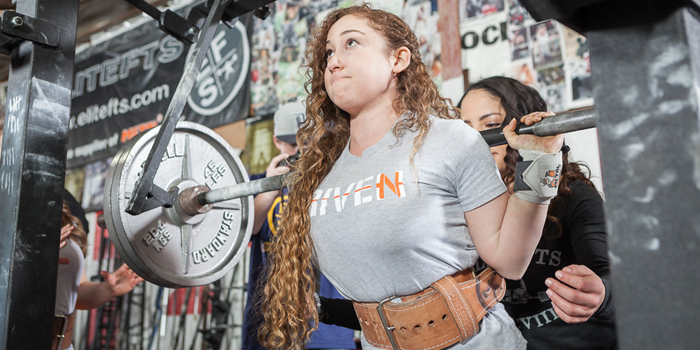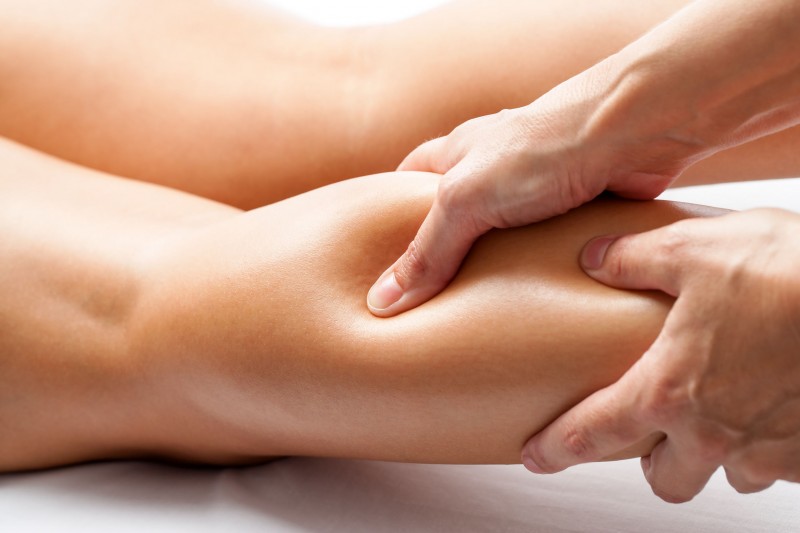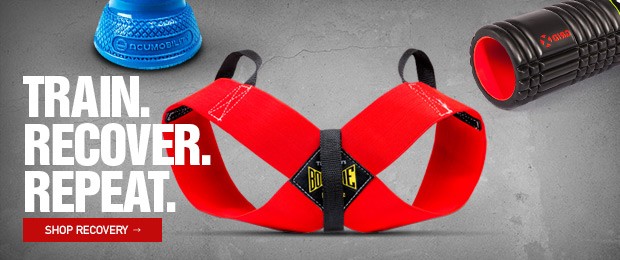
What if I told you massage could be anabolic? Well, it is (kind of). In fact, some scientists out there are starting to propose that massage could be a means to increase muscle size1. Massage has even been shown to reduce muscle loss2, 3 and promote muscle strength and size in conditions of muscle wasting4. And, while you can’t trade your trips to the gym for trips to the massage table, what you can do is read on and hear about how massage itself is capable of triggering an anabolic response.
Mighty Massage-Induced Mechanotransduction
What’s your definition of massage? Is it that thing that feels awesome and makes your muscles smile? While it is that, it technically is a mechanical manipulation of your tissues, through rhythmical pressure and stroking, as a means to promote health benefits5. Thus, when someone gives you a massage, that person is applying a mechanical stimulus onto your working muscles. This mechanical stimulus then gets transformed into various biochemical signals required for the muscle repair and growth process.
RECENT: Is Inflammation the Bad Guy?
This type of mechanotransduction (AKA the ability to turn a mechanical stimulus into an intracellular biochemical event) occurs between the muscle membrane and its extracellular matrix. This means that signals coming from a massaging touch travel from outside to inside your muscle cells. Once in your muscle cells, these signals result in downstream biochemical changes that result in the activation of proteins involved in promoting pro-hypertrophic signaling6 and in inducing increases in protein synthesis7. Massage-induced activation of these downstream effects can, and have been shown to, promote muscle growth1. More specifically, in studies where massage has prompted a hypertrophic response, researchers have observed that this growth is associated with increases in myofibrillar (and sarcoplasmic) protein synthesis1. So basically, this means that muscle can adapt to a massage stimulus by making more proteins required for muscle contraction and force production, which subsequently results in increases in muscle size.
Massage as a Mitigator of Malignant Inflammation
Massage doesn't just stimulate mechanical signals that make muscles grow. It also exhibits pro-hypertrophic effects by reducing perpetuating inflammation, thus allowing for faster restoration of muscle function following exercise. The effects of massage on inflammation are quite profound. Whereas normal muscle damage induces an inflammatory response that is beneficial, if this inflammatory response is excessive, that type of damage restricts muscle function, promotes excessive inflammation, and elicits constrictive amounts of edema. Have you ever had a leg day that left you crippled and unable to sit down in the bathroom? That's the type of restricted function I'm talking about.
However, massage can mitigate these effects. It has been shown that 30 minutes of massage to an eccentrically loaded muscle for four days can not only reduce the amount of intramuscular inflammation and cell death but can also improve recovery and restoration of mechanical muscle function8. Additionally, the timing of massage post-training matters. Massage immediately post-exercise can both reduce inflammation and accelerate recovery,8and, delaying its application reduces its effectiveness9. Thus, massage to an exercised muscle promotes a pro-hypertrophic inflammatory response, in which the inflammatory microenvironment shifts from one that induces cell death and damage to one that supports muscle growth and function9.
So is anabolic massage a thing? Perhaps. Scientifically, the evidence is out there suggesting that massage can promote muscle mass. Not only is massage-induced tension on the muscle capable of triggering pro-hypertrophic signaling pathways, but also it can reduce exercise-induced damage and inflammation. Together, this makes it a potent stimulus to restore muscle function faster following training and to promote muscle growth more extensively. So, while you can't trade your training for some rubs, you can consider adding them in as part of training to not only feel good but also to get bigger.
References
- Miller, B.F. et al. Enhanced skeletal muscle regrowth and remodeling in massaged and contralateral non-massaged hindlimb. The Journal of physiology 596, 83-103 (2018).
- Nood, E.C., Kosman, A.J. & Osborne, S.L. Effects of massage in delaying atrophy in denervated skeletal muscle of the dog. The Physical therapy review 28, 284 (1948).
- Balogh, K. Corrective massage for atrophic masticatory and mimetic muscles. Dental digest 76, 347-348 (1970).
- Suskind, M.I., Hajek, N.M. & Hines, H.M. Effects of massage on denervated skeletal muscle. Archives of physical medicine and rehabilitation 27, 133-135 (1946).
- Cafarelli, E. & Flint, F. The role of massage in preparation for and recovery from exercise. An overview. Sports medicine 14, 1-9 (1992).
- Gautel, M. Cytoskeletal protein kinases: titin and its relations in mechanosensing. Pflugers Archiv : European journal of physiology 462, 119-134 (2011).
- Marcotte, G.R., West, D.W. & Baar, K. The molecular basis for load-induced skeletal muscle hypertrophy. Calcified tissue international 96, 196-210 (2015).
- Butterfield, T.A., Zhao, Y., Agarwal, S., Haq, F. & Best, T.M. Cyclic compressive loading facilitates recovery after eccentric exercise. Medicine and science in sports and exercise 40, 1289-1296 (2008).
- Waters-Banker, C., Dupont-Versteegden, E.E., Kitzman, P.H. & Butterfield, T.A. Investigating the mechanisms of massage efficacy: the role of mechanical immunomodulation. Journal of athletic training 49, 266-273 (2014).












I'm a massagist myself and I'm familiar with the fact that massage is a staple body maintenance for everyone training hard. I loved learning more details about the mechanisms.